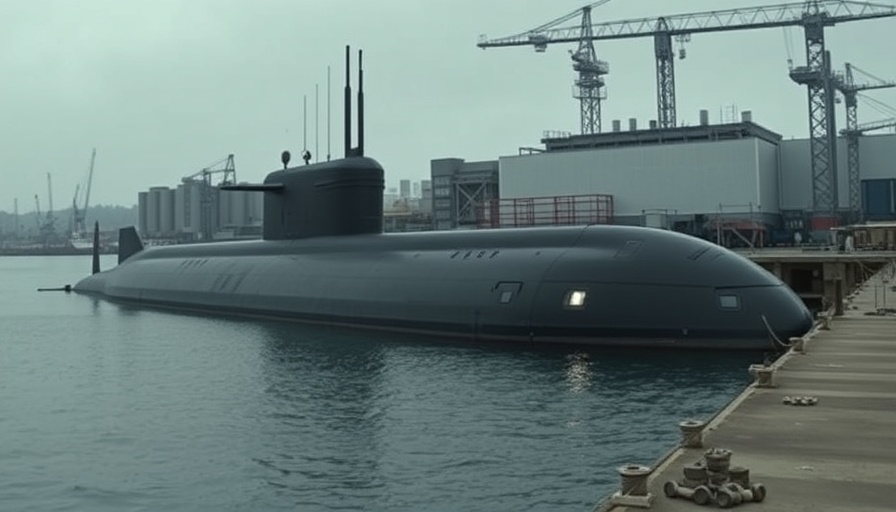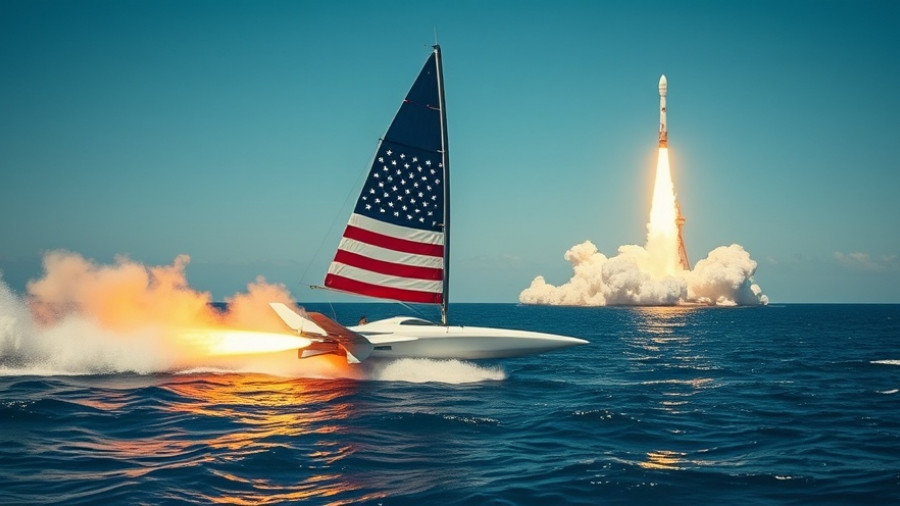
A Milestone for the Royal Navy: HMS Agamemnon Makes Waves
On October 13, 2025, HMS Agamemnon, the Royal Navy's latest addition to the Astute class submarines, achieved a remarkable milestone: her first underwater dive. This event marks a pivotal moment not only for the vessel itself but also for the future of the UK’s naval capabilities.
Testing the Waters: What the Dive Implies
The initial dive does more than just symbolize the vessel's readiness; it serves as a crucial test of the submarine's integrity. Over three days, a dedicated team of 30 crew members, alongside engineers from BAE Systems, meticulously ensured the submarine's stability and watertight seals. These tests are vital, as they confirm the operational readiness of each submarine before it officially joins service.
A Glimpse into Technical Precision and Tradition
One fascinating aspect of this dive involved a method that has historical roots going back to the 1700s: measuring the centre of gravity through lead weights and pendulums. Sixteen tonnes of lead were moved side to side within the hull, allowing naval architects to assess how the submarine would perform once operational. Such technical rigor illustrates the blend of modern engineering and time-tested methods in submarine construction.
Supporting Infrastructure: Boosting Local Employment
The successful execution of this dive reflects a broader trend in the UK’s defense sector. The BAE workforce in Barrow has surged significantly, expanding from 10,700 employees to over 15,000 in 2023 alone, with expectations to reach 17,000 soon. This growth speaks not only to the production needs for the Astute class submarines but also to the importance of skilled labor in supporting national security.
A Look Ahead: Preparing for Future Operations
As HMS Agamemnon prepares for sea trials, it will join its predecessors—HMS Astute, HMS Ambush, HMS Artful, HMS Audacious, and HMS Anson—in the Royal Navy's fleet. Each submarine plays a crucial role in safeguarding the UK’s maritime interests and contributing to global intelligence gathering efforts. The capabilities of the Astute class ensure that the Royal Navy retains its edge in undersea operations, an essential factor in modern naval warfare.
In Conclusion: A Celebration of Innovation and Tradition
The first dive of HMS Agamemnon is not just a technical success; it’s a testament to the innovation, dedication, and legacy of the UK naval forces. As they continue to develop advanced submarines that will protect and serve national interests, the celebration of such milestones reminds us of the importance of community ties and skilled craftsmanship in achieving collective goals.
 Add Row
Add Row  Add
Add 




Write A Comment